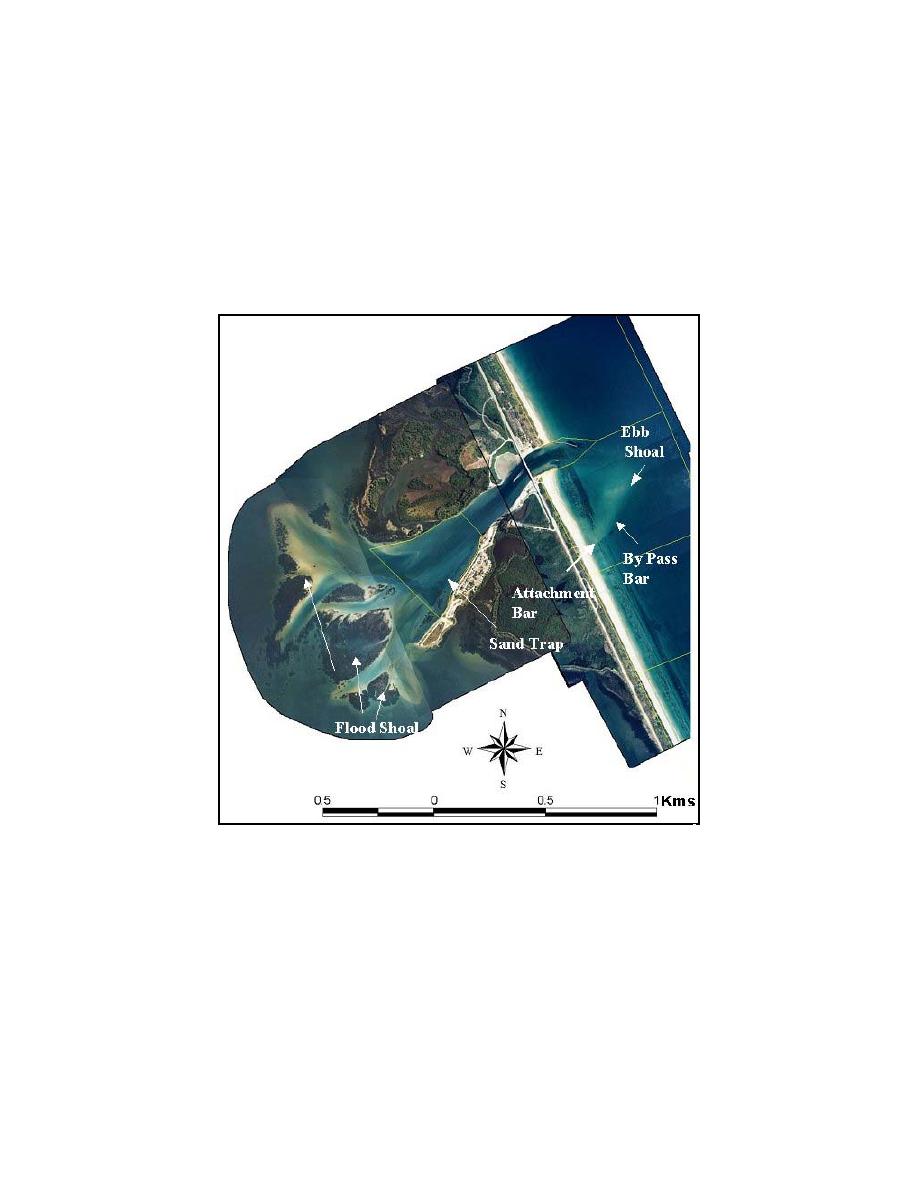
In summary, the Reservoir Model is based on the conservation of sand volume, identification of
sediment pathways, and the existence of an equilibrium volume of morphologic features of the tidal
inlet system. The ebb-shoal complex is defined as consisting of the ebb shoal proper, one or two
ebb-shoal bypassing bars (depending on the balance between left- and right-directed longshore
transport), and one or two attachment bars. These features at Sebastian Inlet are shown in Fig.7.
The model distinguishes between the ebb shoal proper, typically located in the confine of the ebb-
tidal jet, and the ebb-shoal bypassing bar that grows toward shore from the ebb shoal by the
transport of sediment alongshore by wave action.
Fig. 7. Major components of Sebastian Inlet morphology and
associated shoal systems included in the Reservoir Model.
The Reservoir Model represents volumes of morphologic bodies at an inlet as beakers of
maximum volume identified as the equilibrium volume of the feature, to be provided from
observation or prediction. Sediment transport paths are represented by rates and paths connecting
the leaking beakers (Fig. 8) according to conceptualization of the acting processes. A closure
relation of the model is that the output rate of material from a morphologic feature (ebb shoal, flood
shoal, etc.) equals the product of the volume remaining and the rate of volume input. Equations of
the Reservoir Model and a discussion of coupling coefficients that define pathways and the rates of
exchange among inlet features can be found in Kraus (2002) and Militello and Kraus (2001).
Flood
9
Zarillo et al.



 Previous Page
Previous Page
